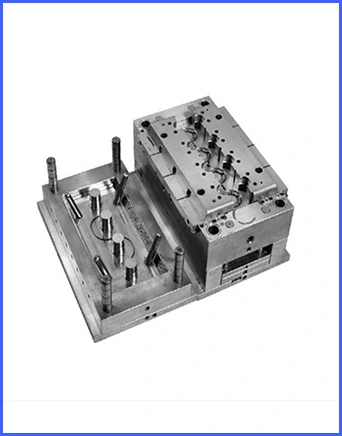Time to read: 6 min

Understanding Injection Molding
The process of injection molding is crucial for the manufacturing industry due to its ability to produce high-quality parts with precision and repeatability. It has a rich history, evolving from 19th-century patents to modern systems that utilize advanced thermoplastics and machinery.
Step-by-Step Injection Molding Process
- Mold Design: A critical initial step involving CAD designs and CNC machining to create molds with features like cavities and cores.
- Plastic Material Selection: Choosing the right plastic resin based on its interaction with the mold tool and required properties.
- Machine Setup: Preparing the injection molding machine, ensuring the mold is correctly aligned and secured.
- Injection Process: Involves heating the plastic, injecting it into the mold, and applying pressure for uniform filling.
- Cooling and Solidification: Maintaining specific temperatures for material solidification with holding pressure to prevent shrinkage.
- Ejection of the Part: Opening the mold and using ejector pins or plates to push out the finished piece.
- Inspection and Quality Control: Post-production inspection to ensure parts meet specifications and undergo necessary finishing processes.
General Rules for Injection Molding
- Ensure part design with uniform wall thickness to prevent mechanical faults and shrinkage inconsistencies.
- Select materials that fit specific requirements and consider the durability of mold tooling.
- High production volume is ideal for cost-effectiveness in injection molding.
- Consider the expected lead time, which can range from weeks to months, depending on the mold complexity.
Benefits of Injection Molding
- Cost-effective: Utilizes recyclable materials and has low labor costs after initial mold design.
- High Production Efficiency: Known for fast production rates and repeatability with low scrap rates.
- High Precision and Accuracy: Consistently produces components with tight tolerances and dimensional stability.
- Versatility in Design: Capable of producing parts with intricate geometrical features.
- Wide Range of Materials: Compatible with thousands of materials, offering a balance of mechanical, chemical, and physical properties.
Considerations for Injection Molding
- High Initial Investment: Custom mold tooling can be expensive, affecting the initial costs.
- Limited Flexibility: Altering a plastic mold after tooling can be complex and sometimes requires new molds.
- Long Lead Times: Compared to other manufacturing processes, injection molding has a longer lead time from tooling to production.
- Material Waste: Factors like mold design, overpacking, and material handling can contribute to waste.
- Environmental Concerns: The process has energy consumption and waste management implications.
Key Uses of Injection Molded Parts
Injection molded parts are vital in various industries, including automotive, packaging, medical, consumer goods, and aerospace, where they serve functions from structural components to complex housings and enclosures.




